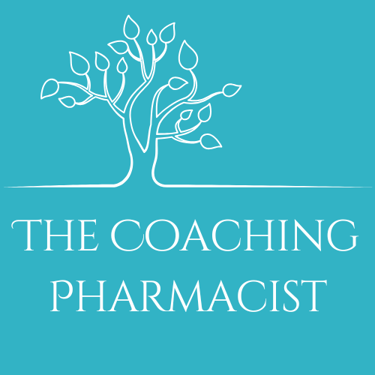
Eat the purple rainbow
Purple foods (natural ones, not the food colouring!) are rich in anthocyanins that protect your heart, support brain function, balance blood sugar and promote gut health. Discover the benefits of adding more colour to your plate.
Claire Rice
10/6/2025
Eat the Purple Rainbow: Why Purple Foods Are Powerhouses for Health
When people talk about “eating the rainbow,” purple foods are often the most overlooked — yet they’re among the most potent when it comes to supporting your health. From juicy blueberries and rich aubergines to vibrant purple sweet potatoes, these colourful foods are packed with unique phytonutrients that do far more than please the eye.
Their secret weapon? A group of natural plant pigments called anthocyanins. These compounds don’t just give purple foods their striking colour — they also have powerful antioxidant, anti-inflammatory and cell-protective effects throughout the body.
What Makes Purple Foods Special?
Anthocyanins belong to the flavonoid family of phytonutrients — compounds found in many plant foods that help protect plants (and us!) from oxidative stress. Studies have shown that anthocyanins contribute to:
Reducing oxidative damage in cells
Supporting vascular (blood vessel) health
Improving glucose balance
Protecting brain and heart function
Research continues to uncover new ways these compounds may protect against chronic disease and support longevity.
(Wallace et al., 2021; Khoo et al., 2017)
Health Benefits of Purple Foods
1. Antioxidant Defence
Anthocyanins neutralise free radicals — unstable molecules that can damage cells and accelerate ageing. They also help the body’s own antioxidant systems work more efficiently (Wallace et al., 2021).
2. Anti-Inflammatory Support
Chronic, low-grade inflammation underpins many modern health conditions, from arthritis to heart disease. Anthocyanins can help reduce inflammatory markers in the body, promoting a calmer internal environment (Khan et al., 2021).
3. Heart and Circulation Health
Purple foods support cardiovascular health in several ways:
Improved blood pressure: Studies suggest that anthocyanin-rich foods can modestly lower both systolic and diastolic blood pressure.
Healthier blood vessels: They enhance the function of the endothelium — the lining of blood vessels — helping arteries stay flexible.
Better cholesterol balance: Some trials show beneficial effects on blood lipids, reducing LDL (“bad”) cholesterol and raising HDL (“good”) cholesterol.
(Cassidy et al., 2021)
4. Blood Sugar and Diabetes Risk
People who regularly eat anthocyanin-rich foods have been shown to have a lower risk of developing type 2 diabetes. Purple vegetables like sweet potatoes and purple carrots can help improve insulin sensitivity and stabilise blood glucose (Wedick et al., 2012).
5. Brain and Cognitive Function
Anthocyanins also seem to protect the brain. Studies link higher intake of purple fruits (like blueberries and blackcurrants) with improved memory, reaction times, and overall brain performance. These compounds may also reduce the risk of neurodegenerative conditions as we age (Whyte & Williams, 2015).
6. Gut Health and Microbiome Balance
Emerging research shows anthocyanins support a healthy gut microbiome. Once they reach the colon, gut bacteria transform them into beneficial compounds that help balance the microbial community and reduce inflammation (Chen et al., 2022).
7. Possible Anti-Cancer Properties
While more research is needed, laboratory and early human studies suggest anthocyanins can help protect DNA from oxidative damage and inhibit the growth of some cancer cells (Kang et al., 2019).
Top Purple Foods to Include
Blueberries, blackberries, blackcurrants
Brain and heart protection, anti-inflammatory. Linked with improved memory and reduced cardiovascular risk
Purple sweet potatoes
Antioxidant and blood sugar support. Animal and human studies show improved glucose control (Kang et al., 2019)
Purple potatoes
Support healthy blood pressure. Small human trial found reductions in systolic and diastolic BP (AARP, 2024)
Aubergine (skin)
Antioxidant and anti-inflammatory. Anthocyanins in the skin help protect liver and lung tissue (Medical News Today, 2023)
Red or purple cabbage
Immune and gut support. High anthocyanin levels, rich in fibre and vitamin C (Wallace et al., 2021)
Practical Tips for Getting More Purple on Your Plate
Mix your colours – Add a handful of purple berries to porridge or yoghurt, or toss shredded purple cabbage into salads.
Cook gently – Steam or roast rather than boil to preserve the colour and anthocyanins.
Add a little healthy fat – Anthocyanin absorption may improve when eaten with fats such as olive oil, nuts, or avocado.
Choose fresh or frozen – Both retain most of their beneficial compounds.
Aim for variety – Try purple carrots, plums, aubergines, beetroot, and purple grapes for a colourful range of nutrients.
A Final Thought
Purple foods do more than make your plate beautiful — they actively nourish your body on a cellular level. While they’re not a cure-all, regularly including purple fruits and vegetables can help reduce inflammation, support heart and brain health, and add a touch of natural vibrancy to your meals.
So next time you’re filling your basket, think purple — your body will thank you. 💜
References
Wallace, T.C. & Giusti, M.M. (2021). Anthocyanins: Nature’s functional compounds. Nutrients, 13(10): 3472.
Khoo, H.E. et al. (2017). Anthocyanidins and anthocyanins: colored pigments as food, pharmaceutical ingredients, and potential health benefits. Food & Nutrition Research, 61(1): 1361779.
Cassidy, A. et al. (2021). Anthocyanins and cardiovascular health: a review of the evidence. Nutrition Reviews, 80(6): 1515–1529.
Wedick, N.M. et al. (2012). Dietary flavonoid intakes and risk of type 2 diabetes in US men and women. American Journal of Clinical Nutrition, 95(4): 925–933.
Whyte, A.R. & Williams, C.M. (2015). Effects of a single dose of a flavonoid-rich blueberry drink on memory in 8 to 10-year-old children. Nutrition, 31(3): 531–534.
Chen, L. et al. (2022). Anthocyanins and gut microbiota interactions: recent advances and perspectives. Frontiers in Nutrition, 9: 9142943.
Kang, I. et al. (2019). Purple sweet potato anthocyanins and their protective roles in metabolic diseases. Molecules, 24(20): 3741






Get in touch
Subscribe to the mailing list (your details will not be shared)
GPhC registration, Claire Rice 2082362
The Coaching Pharmacist Ltd Company number 16802064 registered in England
